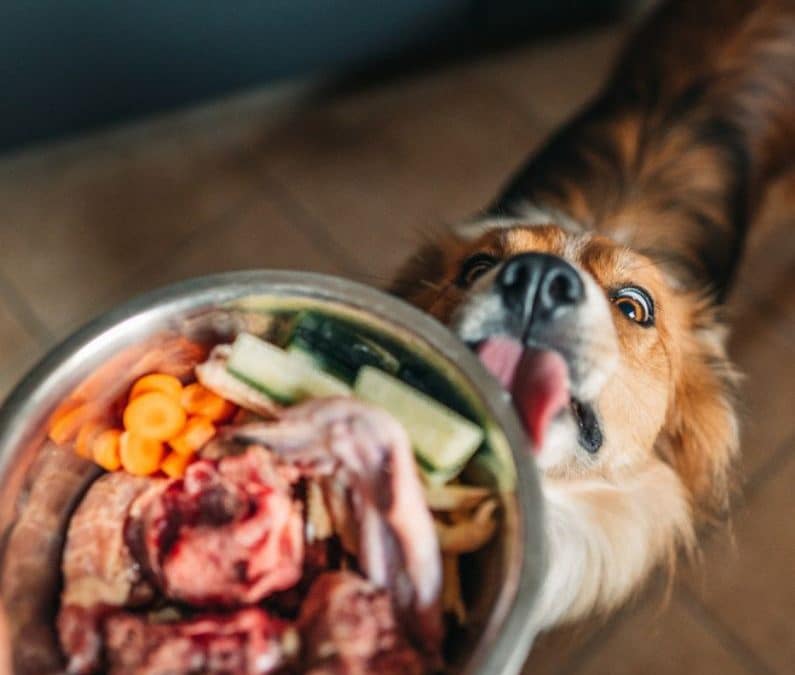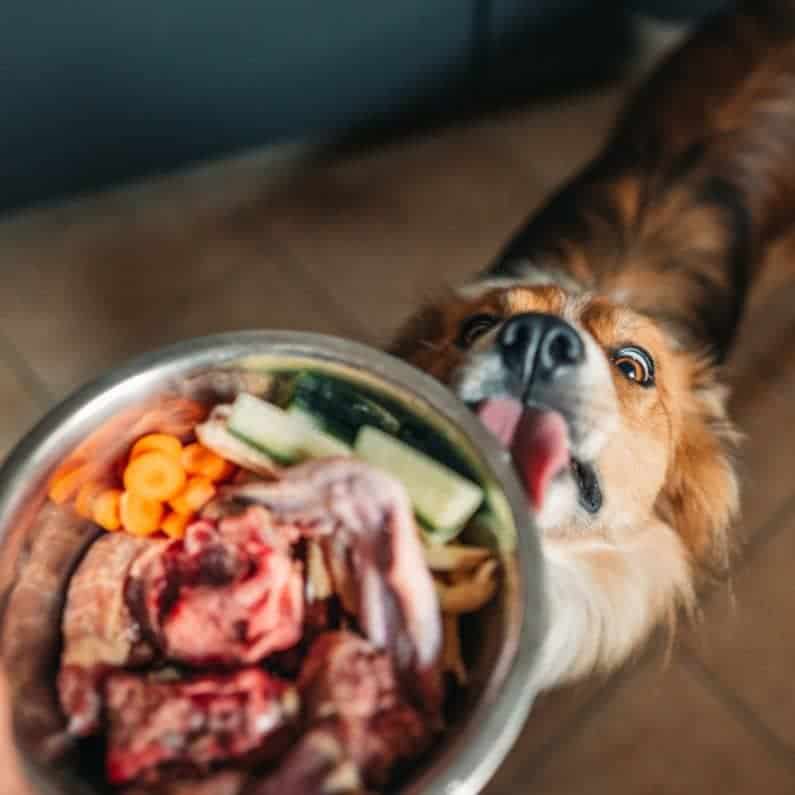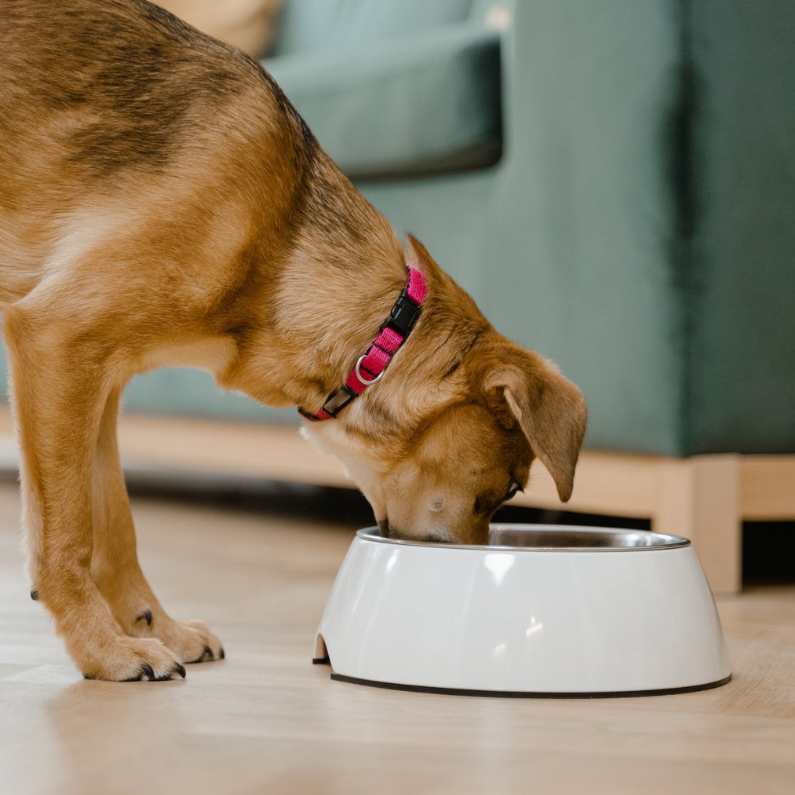How to Balance Nutrients in Your Pet's BARF / Raw Food Diet
The BARF diet for dogs is “Biologically Appropriate Raw Food” or “Bones and Raw Food.” It is a type of diet for dogs that emphasises feeding them uncooked and natural foods, typically consisting of the following components:
Raw Meat: The primary component of the BARF diet is raw Meat. This can include beef, chicken, turkey, lamb, and other types of animal protein.
Raw Bones: Raw, meaty bones are often included in the diet. These can be recreational bones for chewing, like beef marrow bones, or edible bones, such as chicken necks or backs; these bones can help keep a dog’s teeth clean and provide essential nutrients.
Organ Meats: Organs such as the liver, kidney, and heart are an essential part of the BARF diet, as they provide vital nutrients and are considered more nutrient-dense than regular muscle meat.
Fruits and Vegetables: Some versions of the BARF diet incorporate fruits and vegetables, often blended or finely chopped and included in the dog’s meals. These can provide additional vitamins, minerals, and fiber.
Supplements: To ensure the diet is balanced, some BARF diet proponents recommend adding supplements, including essential fatty acids, vitamins, and minerals.
The idea behind the BARF diet is to mimic what dogs’ wild ancestors might have eaten, which consists of raw, whole foods; it offers several health benefits, as mentioned in the previous response.
Rotate protein sources in your dog’s raw food diet.
Varying and swapping out your protein sources can work wonders in achieving a well-balanced diet! For added nutrition and flavour, consider incorporating organ meats like liver, heart, kidney, lung, pancreas, brain, spleen, sweetbread, and green tripe.
Liver is important in the diet, and the general recommendation is for it to make up around 10% of the dog’s diet. However, the liver does need to be carefully regulated to prevent the risk of hypervitaminosis A.
Organ meat is very nutrient-rich and can cause a dog to experience digestive upset if they are given too much too quickly, so there should be a gradual increase of up to 20% in the diet.
It is recommended that the total dietary fat content should be between 10-20% for dogs.
To give an idea of fat content differences in common meats:
- 80% lean ground beef – 20%.
- Regular ground beef – 30%.
- Skinless ground chicken – 8%.
Additional supplements for your dogs
Vitamin D and manganese can often be lacking in homemade and raw diets, but fear not; there are delicious and nutritious sources to boost these essential nutrients. Think raw fatty fish, egg yolks, green-lipped mussels for vitamin D, green-lipped mussels, oysters, shellfish, and spinach for manganese. While supplements are an option, many people prefer natural sources to avoid going overboard with vitamin D. So why not spice up your diet with these fantastic choices?
Adding fruit and vegetables to your raw food diet.
When it comes to preparing raw diets, two formulas reign supreme: the 60/20/20 and the 80/20. These two powerhouse diets are key to unlocking optimal nutrition and making mealtime an irresistible experience for your furry friend.
60/20/20 formula
Get ready to discover the power of the 60/20/20 formula!
With a whopping 60% meat, 20% fruit and veggies, and 20% carbs, this formula is a game-changer. It’s perfect for those transitioning their dogs to a raw diet, especially for improving health conditions and supporting senior dogs.
80/20 formula
Introducing the 80/20 formula: a diet that’s 80% meat and 20% fruits and vegetables. This unique blend caters to specific health conditions and carb-free preferences. While it can be beneficial, remember that older pets may need less protein to avoid excessive fat storage. Embrace the power of balance for your furry friends!
Fruit and vegetables for dogs
If you are adding the power-packed duo of fruits and vegetables! They should make up around 10-20% of your dog’s meals. If you can swing it, organic options are the way to go. And when it comes to a raw diet, low-sugar berries, fruits, and veggies are superstars. From broccoli and kale to blueberries and cranberries, there are endless options to keep your pup’s taste buds and health in top shape!
How to Balance Nutrients in your Pets BARF diet
The BARF diet for dogs is “Biologically Appropriate Raw Food” or “Bones and Raw Food.” It is a type of diet for dogs that emphasises feeding them uncooked and natural foods, typically consisting of the following components ...
Transitioning your Pet to a Raw Food Diet
The process of transitioning an animal from one diet to another can be a tricky one. Some animals adapt quickly and without much trouble, whereas others may find it very stressful and challenging. When transitioning an animal to a different diet ...
Four Benefits of Feeding your Pets a Raw Food Diet
With lower carbohydrate levels, raw meat diets reduce bacteria buildup in your pet’s mouth, promoting better dental health. Plus, the action of chewing on raw meat and bones gives your furry friend an extra boost. Recent studies suggest ...



